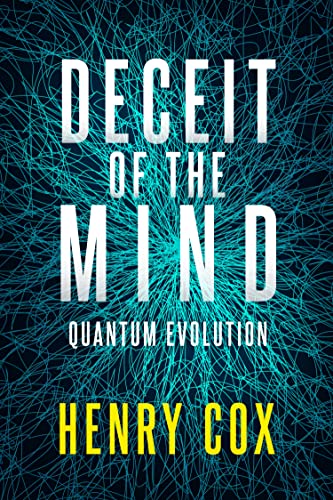The Bottom Line: For fans of Alastair Reynolds, Deceit of the Mind is a sprawling hard sci-fi thriller that effectively combines quantum physics, history and cloak-and-dagger tactics. Highly recommended.

The third book in Henry Cox’s award-winning Deceit series opens at a planetarium in Kansas City as the event’s planned speaker, former dark operative and semi-retired attorney Benjamin Oliver, cancels on short notice. Taking his place is Professor Susan Schiffelbein, who shocks the crowd by saying that each of them were selected to attend by a series of complex algorithm searches. Further, she declares that a handful of the attendees “will play a major part in unraveling certain unknowns as we continue to explore the quantum world.”
After two decades of living in obscurity, Benjamin is thrust back into the spotlight as he’s tasked with saving humanity. His international team of elite intelligence operatives are reunited by fate to work together in a world plagued by corrupt elitists who have infiltrated every level of government, including the military and intelligence agencies. Benjamin finds himself in the ultimate race against time, with the fate of the world hanging in the balance.
Cox’s ambitious, labyrinthine story is told across several timelines spanning 1000 years, including the present day, the near future, AD 600s Arkansas, 1980s Virginia and 1830s New Orleans. While Cox’s plot has little in common with fiction classics Revelation Space and The Time Traveler’s Wife, readers who enjoy quantum themes such as parallel universes, entanglement and teleportation in those novels will relish much of the discussion here.
While wrapped in a global conspiracy, Cox’s style is a fascinating mashup of history, theory and science. One of the more enticing aspects is the concept of The Templar Room, a clandestine operations group hidden within the bowels of the U.S. Treasury Department tracing its history to the early 1900s. While the organization seems at times to be merely a pebble among a beach of interesting jewels, the group’s mission – and occasional focus on minutiae, such as Yale’s Skull and Bones society – is worthy of its own novel.
We’re frankly not sure how Cox manages to juggle so many characters and concepts across timelines, but like George R.R. Martin, he manages to pull it off. In the author notes, Cox forgives readers who “read-over some of the science and history.” Our advice? Don’t skip a word. This epic beast isn’t for everyone, but for sci-fi nerds who love to be challenged, it hangs together quite well.

